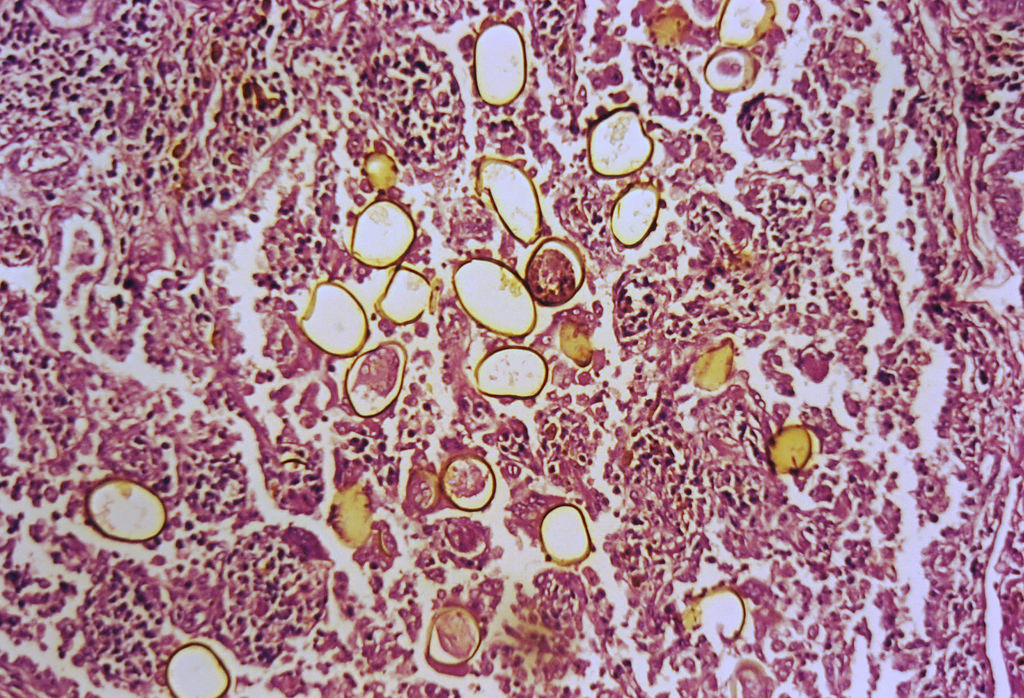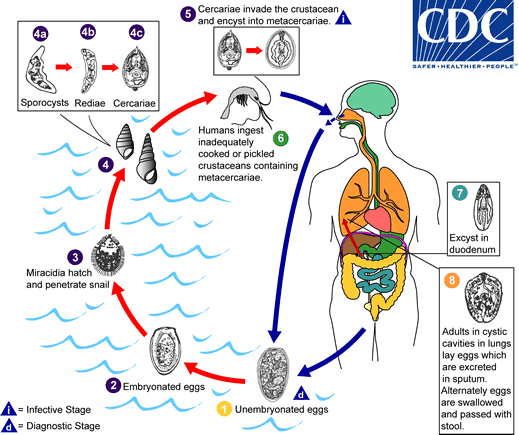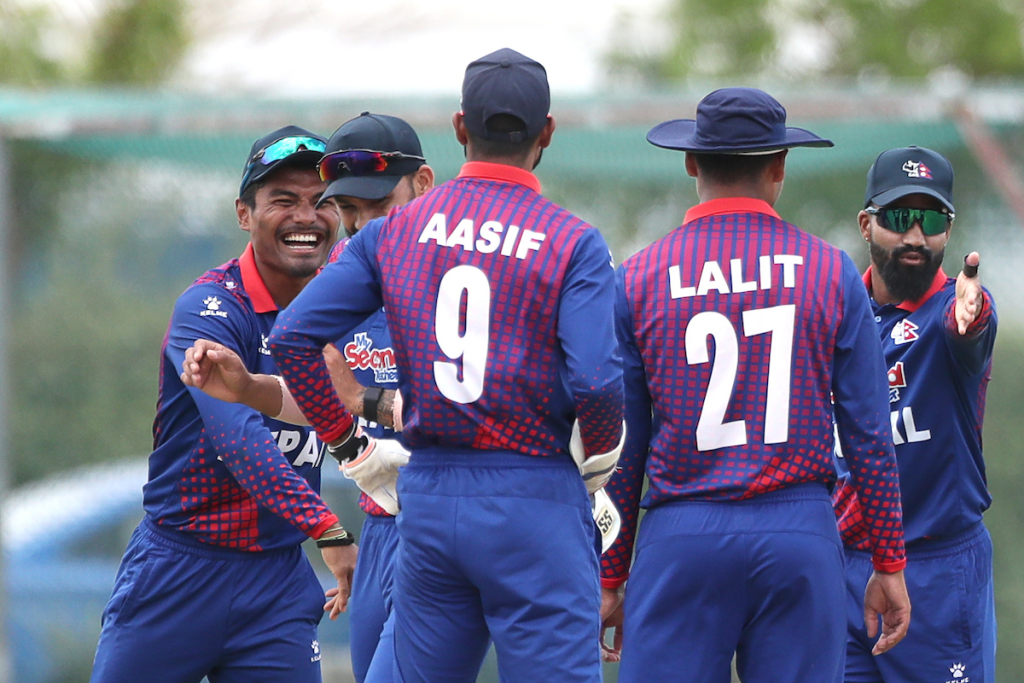
Ask locals of many Nepali villages what they do as primary treatment for jaundice, hundreds of them are likely to say, “Mince raw crab or crayfish and eat it uncooked.”
The homemade medicine is, in fact, effective in healing the ailment quickly- if we are to believe what a man from Gulmi told doctors at TU Teaching Hospital in Kathmandu recently. The man, in his 30s, then told the doctors that raw crab helped him fight jaundice around two years ago. Perhaps he was happy to have found such an effective medicine in his own village without spending a single penny.
However, it was not much later that he experienced regular chest pain and cough, among other symptoms. At first, he thought he had caught a a cold, hence did not care much. But, the symptoms persisted frequently, forcing the man to visit different hospitals in the search of treatment.
At first, he tried the regional hospitals nearby his house and then went to Palpa, Butwal and Bharatpur. Each hospital kept on referring the case to another one. Tired, he approached the TUTH.
His 10-year-old son accompanied him because he also had similar symptoms. Doctors attending to the child also took this case interestingly not only because the father and son shared similar symptoms, but also he too had suffered jaundice a couple of years ago. The child was also given minced raw crab to fight the disease.
A joint examination of the cases revealed some surprising results to the family as well as the doctors—the prime cause of all the problems was the crab that they consumed as medicine. The disease the man and his son contracted was paragonimiasis, a parasitic infection transmitted through food, according to Dr Ranjit Sah of the TUTH Department of Microbiology.
Nepalis at risk

The disease, common in most countries of Southeast Asia, is rarely heard of in Nepal. However, due to the superstition that raw crab helps fight jaundice or heal fractured bones, many Nepalis are at risk, claim medical professionals.
“If there was no such superstition, the risk level would definitely come down significantly,” Dr Sah says, “Besides that belief, there is nothing in our culture that promotes the consumption of crab or crayfish.”
However, people living with poverty in many parts of the country have been forced to eat such creatures as they can be found around them, for free, Dr Sah explains, adding he himself ate crabs many times when he was growing up in a Terai village.
Solving the problem of poverty requires a lot of efforts and resources. However, to save them from getting infected, the people can make sure that their food is well cooked, suggests Sah. “There is no problem if you fully cook a crab or a crayfish before you eat them,” he claims, “But if you eat these creatures, raw, you are certain to get infected.”
In general, infected crabs have a particular fluke inside them. When people eat them raw, the crabs get digested, but not the flukes. The flukes find their ways to lungs via the intestines. The symptoms surface after two to three months after the infection.
Crab and crayfish are the most common ‘intermediate hosts’ of Paragonimus westermani parasite; but it can be transmitted to humans through other similar creatures, according to Sah. Likewise, not only humans, other mammals can also get infected.
Meanwhile, Dr Sah clarifies that vegetarians are safe.

“So far, we have diagnosed around five cases and they have come from three districts—Chitwan, Syangja and Gulmi. We have recorded names of their villages as well—Kurintar, Jyamire and Beduwa in the districts respectively—and people living around these places should be more cautious,” he adds.
Confusion with tuberculosis
Dr Sah points out a more serious problem with the disease—that its nature is similar to tuberculosis. Because both tuberculosis and paragonimiasis are endemic and paragonimiasis is quite difficult to diagnose, more often than not, the condition is diagnosed as tuberculosis.
Major symptoms—chest pain, cough, short breathe and occasional fever—are common in both the diseases. Both affect the lungs and similar tests can diagnose the diseases.
“Perhaps, one of few differences that we notice between patients of tuberculosis and paragonimiasis is that paragominiasis patients have ova of Paragonimus westermani in their sputum. But the problem is that sputum test cannot detect the ova all the time. Only 28 to 38 per cent tests have detected the ova successfully,” he says.
“Serological testing for antiparagonimus antibody by enzyme-linked immunosorbent assay (ELISA) has a sensitivity of 100 per cent. It is a useful test for establishing the diagnosis of paragonimaisis,” the doctor informs, “However, it is not available in Nepal.”
Besides, the rise in the number of eosinophils, a white blood cell that fights with diseases, can also provide a hint on whether someone has contracted tuberculosis or paragonimiasis. The number rises in the case of paragonimiasis.
But, if the patients tell their dietary history to the doctor, diagnosing can become easier. If patients lie about their history, the chance of a misdiagnosis will increase.

Effects of wrong medication
When the disease is misdiagnosed as tuberculosis, doctors are likely to prescribe medicines meant for tuberculosis. Its effects are counter-productive.
In tuberculosis cases, medicine generally improves the patient’s conditions within a few months. “When the medicine fails to work, we think that the disease has become more resistant, and apply a stronger dose of medicine. But if the patient concerned is suffering form paragonimiasis, the application of a higher dose of TB medication results in even worse conditions.”
“Medicines that we apply to fight tuberculosis are infamous for their side effects. If a patient of paragonimiasis is given anti-tuberculosis medicine; the patient will die within the next two years.”
Paragonimiasis cases are of three types: pulmonary that affect the lungs; extrapulmonary that affect other organs, mostly brain; and pleuropulmonary that affect the covering outside lungs. Whereas pulmonary cases fall prey to the wrong diagnosis, wrong medication and early death in countries like Nepal; extrapulmonary cases are also equally dangerous.
Extrapulmonary paragonimiasis results in a chronic headache, paralysis and epilepsy among others. Patients with extrapulmonary cases live longer than those with pulmonary cases; but their life will be too difficult, according to Dr Sah.
Easy solution
If the disease is diagnosed correctly, the treatment is fairly simple, Dr Sah informs.
“There are many infectious diseases like fascioliasis, for which we do not have an easy access to right medication,” he says, “But for paragonimiasis, we already have a good medicine called praziquantel, which we use to cure other parasitic infections. Taking it for three days, three times a day, gets rid of the disease in most cases.”
“But, to apply this easy solution, doctors must be aware of the prevalence of paragonimiasis in Nepal and the patients should be willing to tell their history honestly,” he says. That was what the man from Gulmi did and that saved him and his son.




















